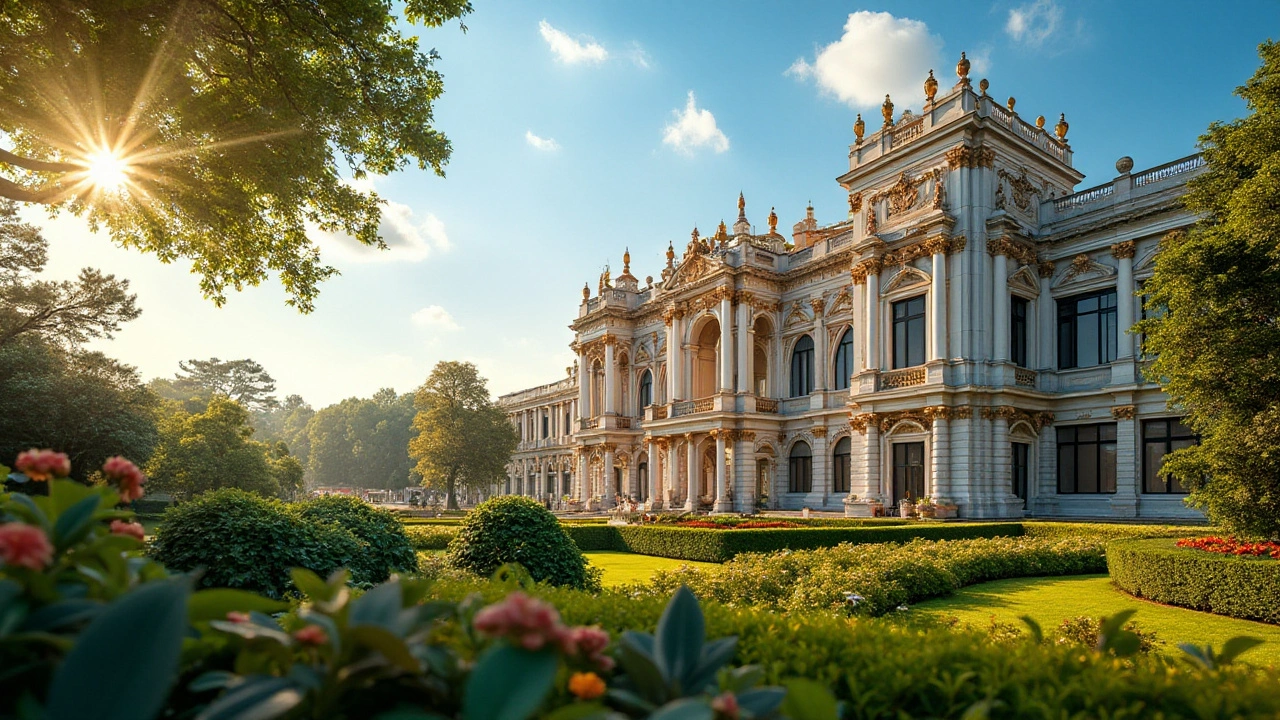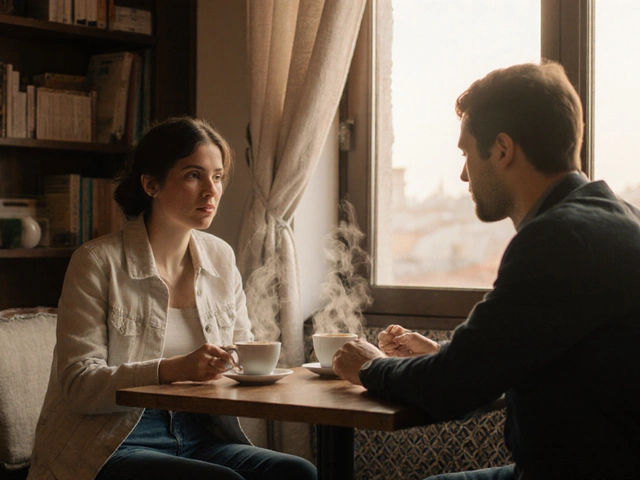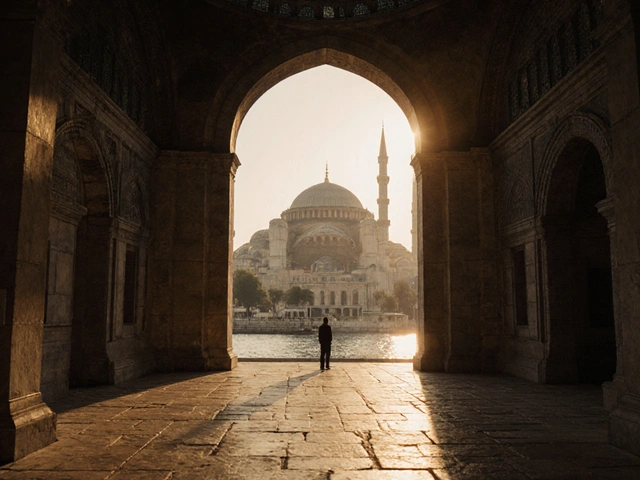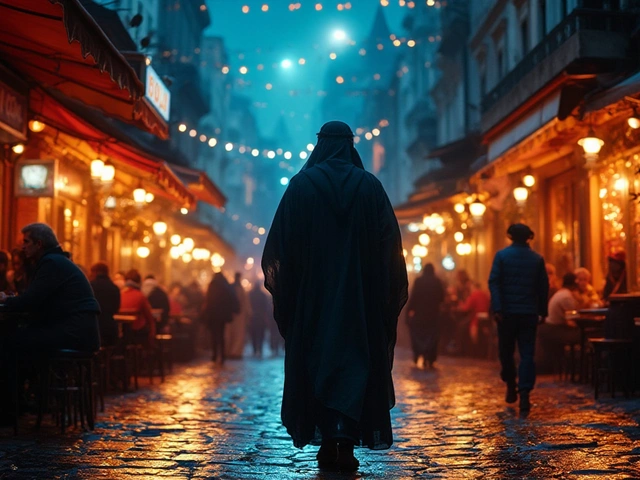In Istanbul, a city bursting with vibrant tales and whispered secrets, stands a monument to opulence and desire—the Dolmabahçe Palace. This lavish sanctuary on the Bosphorus pulses with stories both historical and scandalous, known for captivating the souls of those who dare wander its halls.
Here, amidst the marble and gold, lies a realm where the walls seem to breathe with the countless intimations of past lives. It draws you in, effortlessly blending the warmth of Turkish tradition with a tantalizing promise of the exotic and hidden.
- A Journey Through Opulence
- The Sensual Allure of Architecture
- Hidden Histories and Secrets
- Cultural Reflections and Modern Connections
A Journey Through Opulence
As I stepped into the Dolmabahçe Palace, the grandeur of the Ottoman Empire unraveled like a sultry adventure novel. The palace, an exquisite reflection of the 19th-century imperial dreams, whispered with tales of seduction and splendor. This was a time when Turkish sultans entwined their destinies not just with political power but with the tantalizing allure of aesthetic decadence. Marble floors kissed by echoes of countless footsteps, ceilings adorned with chandeliers in a flurry of crystalline dreams—the very air seemed to pulse with an erotic energy, much like an intimate tango under the shadow of the moonlit Bosphorus.
Every chamber I wandered into presented its own brand of sensual luxury, a delightful orchestration where opulent furnishings spoke of secretive glances and whispered affairs. One could easily imagine the grand harem gatherings, court intrigues simmering beneath polite smiles, a feast for both the senses and the imagination. Here in Istanbul, where East meets West, the architecture itself seemed to partake in the cultural bacchanal, rendering homage to both neoclassical chastity and Ottoman sensuality.
The palace interiors painted tales with their palmed motifs and velvet drapery, while the extravagant throne room, dominated by a towering chandelier, whispered of power and seduction. I stood, imagining the sultan surrounded by divans of luxury, ensnaring his court in a web of passion that blurred public duty with intimate indulgence. It was a stage set for a drama of loves both lived and lost, an eternal dance of politics and desire.
"The Dolmabahçe Palace is a gilded cage of dreams, where history and fantasy intertwine beneath the turquoise sky," mused Orhan Pamuk, capturing in words what the eyes could only glimpse.One didn't need to search hard for innuendos hidden in the ornate carvings, the turns of satin-wrapped pillars and the soft surrender of silken tapestries. Indeed, the very stones seemed to breathe sighs of forbidden desires and clandestine loves. These remnants of grandeur, amassed over decades, shimmered with the allure of secrets tucked within alcoves, waiting to be discovered by the hapless wanderer.
To conclude this overwhelmingly lavish embrace of artistry, stroll into the gardens, letting the sea breeze drift over your flushed cheeks as it whispers through cypress and jasmine, reminding you of Istanbul’s own story—a tale forever woven through the grandiosity of hidden gems like Dolmabahçe Palace. This sanctuary is not just an echo of the past but a tangible sentiment of human choices, seduction, and the age-old pursuit of beauty that defies the constraints of time.
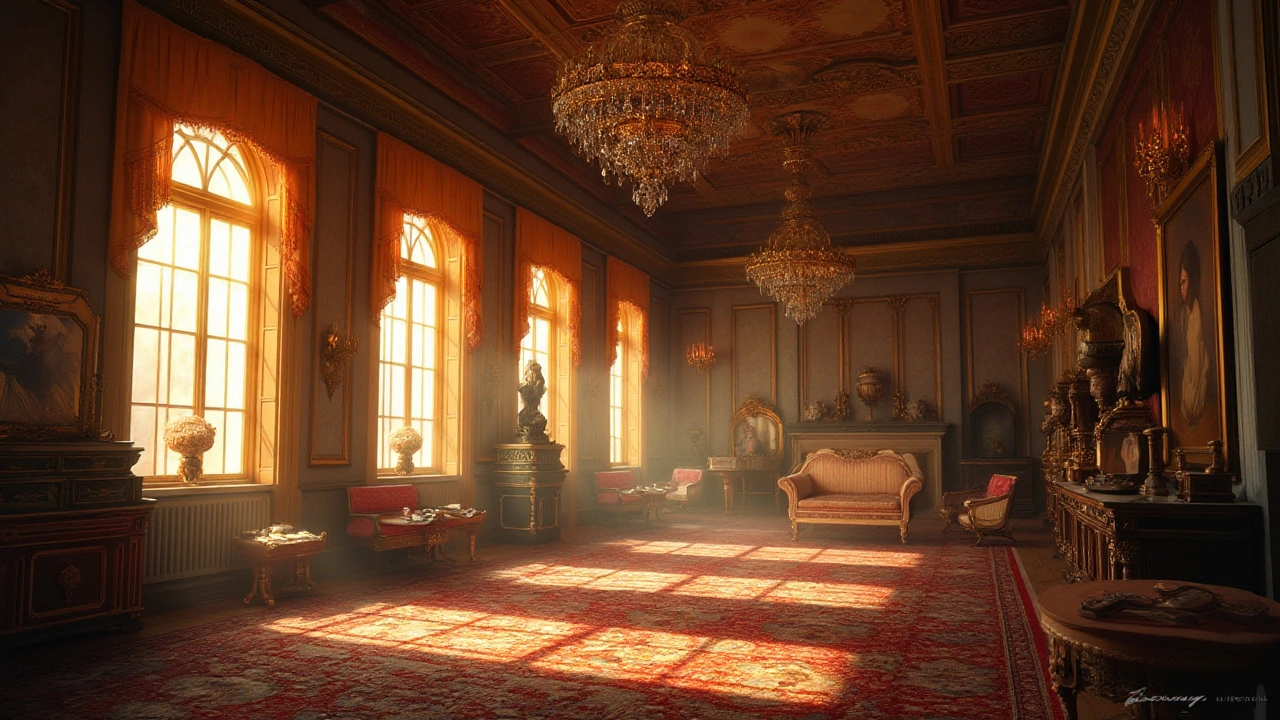
The Sensual Allure of Architecture
As you stroll through the decadent hallways of Dolmabahçe Palace, the stones themselves seem to vibrate with a sultry energy. The architecture is like a grand dance of textures and curves, each element precisely orchestrated to evoke a sense of longing and discovery. It's as though the palace was designed to seduce the senses, each ornate detail beckoning you to get lost in its beauty. Each room, with its sumptuous décor, feels like stepping into a lover's embrace—a gentle whisper of the past, filled with promises of forgotten affections.
The palace's architecture boldly blurs the lines of conventional beauty, mixing European influences with a distinctly Ottoman flair that provokes both awe and mystery. The grand staircase is a poetic ascension, its crystal balustrades shimmering like a lover's eyes, luring those who dare with a promise of secrets held within its embrace. Underneath the palatial domes, the celestial scenes whisper the poetry of the cosmos, urging one to ponder the profound connection of human desire with the vastness of the universe. It's this unspoken intimacy that gives the palace its irresistible allure.
Bernard Shaw once remarked about the architecture, "The columns stand as firm as ideals, yet they sway with the subtle elegance of a dancer." This quote captures the essence of Dolmabahçe's architecture—a structure that is solid yet elusive, echoing the tantalizing duality that Istanbul itself embodies. The elegantly crafted arches suggest pathways not only in the palace but to unknown territories lurking within one's own desires.
Unexpected rooms reveal themselves like clandestine affairs, where the passion of the craftsmen intertwines with the souls of those who inhabited these luxuriant chambers. The opulent silk wallpapers and intricate woodwork speak of stories that could easily be whispered in shadows. Here, under the whispers of chandeliers, esteemed guests and lovers navigated the delicate symphony of social rituals and intimate encounters—a dance that continues to echo in the gilded mirrors and marble floors.
Istanbul’s unique position as a crossroads of cultures is woven into the palace's very foundation. The intricate mosaics and delicate arabesques are not merely decorative; they are the visual equivalent of an age-old seduction song, drawing one in with their intoxicating patterns. The harmony of the design reflects the sensuality inherent in the city's blend of East and West—a tapestry as vibrant and provocative as the tales of sultans who once held court in these very chambers.
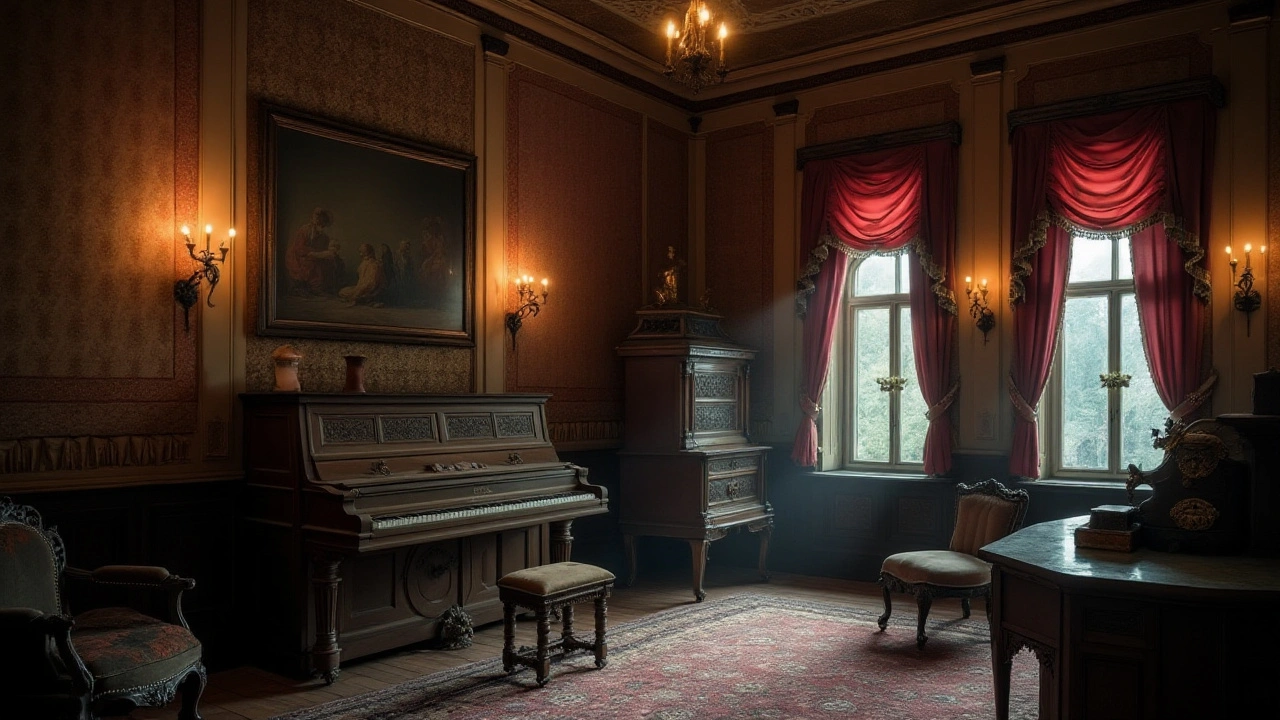
Hidden Histories and Secrets
Stepping into the inner sanctums of Dolmabahçe Palace feels akin to peeling back the layers of a lover’s intimate embrace, revealing tales that have been hushed over time. The palace itself, with its exquisite rooms that remain caught between silken curtains and time, holds memories of sultans and concubines whose whispers still echo faintly against its ornate walls. I remember standing there, my senses wrapped in the intoxicating scent of past opulence, sensing the forbidden stories that lined the corridors like spectral guards protecting aged secrets.
The Harem, in particular, always struck me as a place both feared and coveted, a haunting reminder of desires that danced unchecked within its confines. Here, amidst the mosaic-tiled floors and ceilings kissed with grandeur, the women of the Ottoman elite lived out lives akin to gilded birds within their cages. It was a realm where beauty and yearning weaved tapestries as intricate as any woven by the palace’s master artisans—a testimony to the sensuality that ran deep beneath the surface of Istanbul’s historical narrative.
Exploring this, I’m reminded of how Istanbul, in its complexity, mirrors these hidden pleasures and pains. As I wander through its passages, I envision scenes of carnal indulgence cloaked under the guise of regal tradition, where the sultans’ eyes roved over their chosen few with a lustful hunger that political power could never satiate. "The Harem was not only a place of seclusion," wrote Sahin Kaya, "but a crucible of passion and intrigue that few outsiders could ever imagine."
The Harem was not only a place of secession, but a crucible of passion and intrigue that few outsiders could ever imagine.
Then there’s the mysterious tale of Moulaye's Room—a name whispered with trepidation by palace staff even in modern times—as if speaking it might wake the forgotten Marquis, a European noble who supposedly met his sultry end in its embrace. Rumor has it that his dalliance with a harem beauty led him to a fate sealed by silk and shadow, a cautionary tale that blurs the lines between reality and myth. Such stories remind me how lust and envy, as much as politics and warfare, shaped the course of Turkish history.
I find solace in these secrets, understanding that Dolmabahçe is more than a mere museum; it’s a living diary brimming with the breath of human emotion. Whether it is emboldened by echoes of desire or the gentle irony of fate that once sought to bind passion with power, it enlivens my senses every time. The palace, after all, is as much a keeper of past indulgences as it is a monument to an Istanbul that once was, when the beating heart of an empire was driven by desires unsatiated and secrets untold.
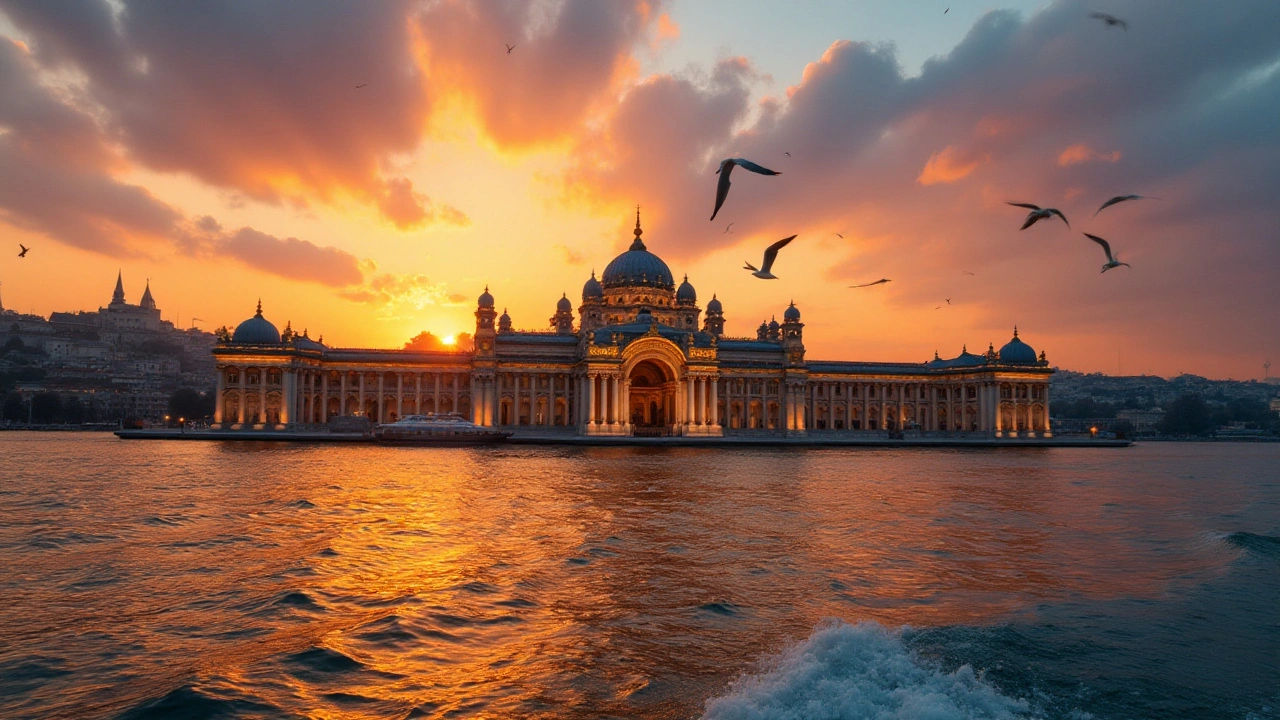
Cultural Reflections and Modern Connections
As I wandered through the halls of Dolmabahçe Palace, it became clear that the walls resonated with a cultural symphony, a complex dance between the extravagant past and the vibrant present of Istanbul. The palace itself is a testament to the Ottoman Empire's breathless romance with Western European opulence, a love affair intricately etched in gold leaf and crystalline chandeliers that could fill entire ballrooms with light.
The Sultan's quarters, draped in silk fabrics and the scent of rosewater, whispered tales of forbidden passions. You could almost feel the lingering presence of lives lived in secret, where corridors bore witness to the enticement of power and the fatal beauty of desire. These chambers tell stories that intertwine lust and leadership, the eternal tale of absolute power laced with scandal.
But beyond the luxurious trappings, one cannot ignore the profound impact that this Istanbul landmark has had on modern Turkish identity. Its architecture, marked by French Baroque influences, serves as a canvas upon which Turkish culture paints its narrative. Here, tradition meets the edginess of contemporary design, a juxtaposition evident in the bustling art scene that now reverberates through the city. The fusion has birthed a vibrant aesthetic personality unique to Istanbul, drawing creatives and innovators into its seductive embrace.
Speaking of seductive allure, I found an echo of the palace's innuendo-filled past in the present-day bustling nightlife of Istanbul. The pulse of the city, much like a forbidden lover, teases and tantalizes with its intoxicating charm. As I drifted through the nearby streets, the soft glow of candle-lit taverns and the deep, rhythmic beats beckoned me closer. Here, modernity and history collided, an eternal dance between shadow and light, dream and reality.
A famous local historian once noted, "Dolmabahçe is the heart of a city that never ceases to seduce."
This intoxicating mix of the past and present, a swirling cauldron of history simmering alongside the modern world, speaks to more than the eye can see. It's grown roots deep into Istanbul's heart and soul, influencing everything from fashion runways to intimate less-explored pathways explored by couples hidden beneath the vaulted ceilings of cozy tea houses.
Perhaps it's the palace's enduring connection to the sea that aids in its captivating blend of cultures. As the Bosphorus flows, forever linking two worlds, Dolmabahçe stands as an alluring witness—an eternal testament to Istanbul's exquisite ability to engage in its own uniquely seductive dance, a timeless liaison between east, west, tradition, and innovation.
